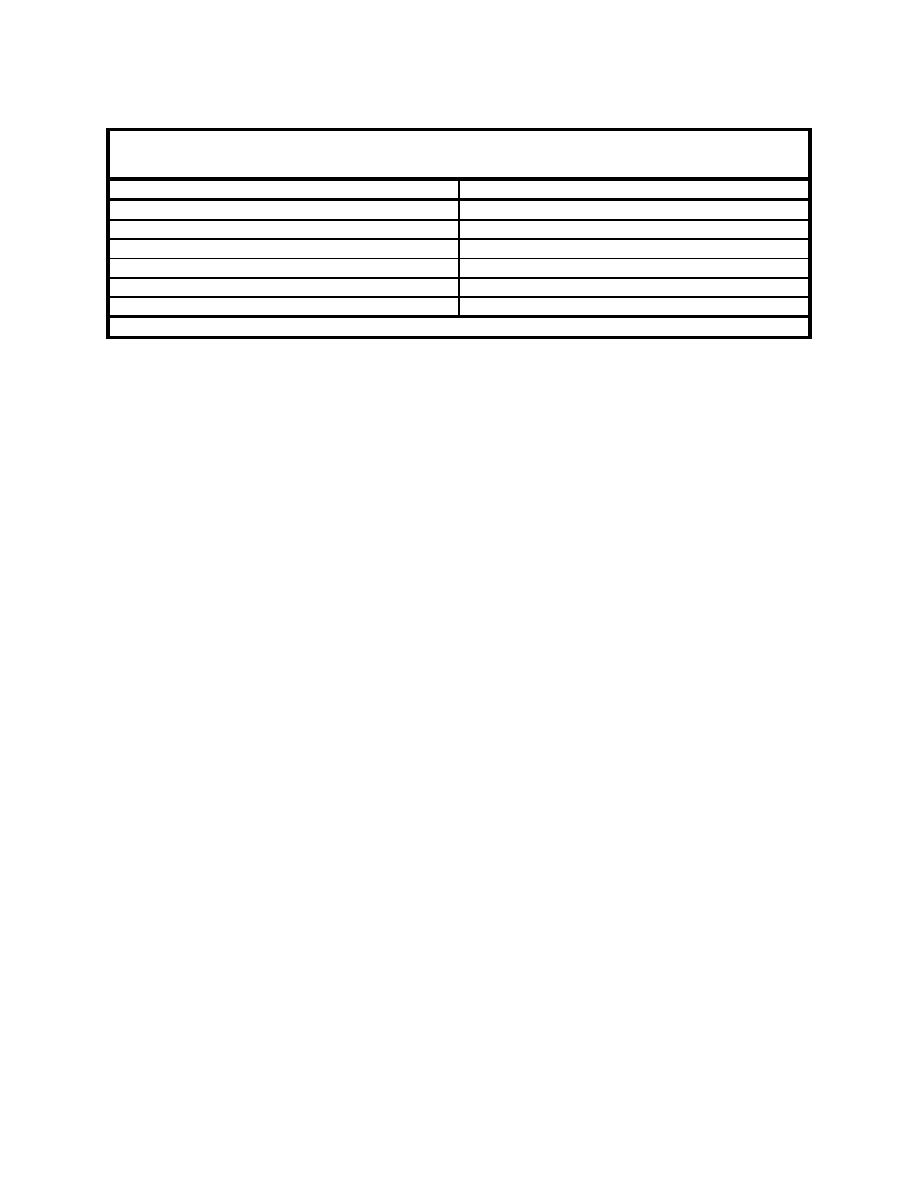 |
||
|
|
||
|
Page Title:
Table 9. Relative Cost Ranges for Select Liner Material Systems |
||
| |||||||||||||||
|
|
 ERDC TN-DOER-R6
December 2004
Table 9
Relative Cost Ranges for Select Liner Material Systems
Liner System
Qualitative Cost Ranges
Dredged material liner
$$
Soil liner
$$$$
Modified soil/dredged material liner
$$$$$$$$
Geomembrane liner
$$$$$$$$$$$$$$$$$$$$
Geosynthetic clay liner
$$$$$$$$$$$$$$$$$$$$$$
Composite liner
$$$$$$$$$$$$$$$$$$$$$$$$$$$$$
Note: Each liner system includes a compacted subgrade.
Construction Contracts. CDF construction contracts are normally specification-based; although
performance-based criteria may provide contractors additional incentive to furnish innovative designs that
reduce costs while still meeting design requirements.
Quality Assurance and Quality Control. Exercise of good construction practices, including
protection of compacted lifts from desiccation and freezing, effective mixing of soil, and interlocking of
previous and subsequent liner lifts, should also include provisions for active and vigilant supervision of
construction activities and laboratory testing by qualified quality assurance and quality control personnel.
Details on quality assurance and quality control issues for liner systems are provided in EM 1110-2-1911
(USACE 1995) for earthwork and for geosynthetic systems by government (e.g., USEPA 1986a, 1987,
1993c), and industry trade organizations and manufacturers (e.g., Waste Management of North America,
Inc. (WMI) 1990, National Seal Company (NSC) 1991a, 1991b).
OPERATIONAL CONSIDERATIONS:
CDF operational considerations include dewatering,
performance/effectiveness, reliability, and monitoring.
Dewatering. CDFs differ from solid and hazardous waste landfills in that dredged material has
significantly higher initial moisture content. Therefore, dredged material dewatering should be
considered in liner design. Dewatering serves several purposes: (1) removal of potential leachate as the
water continues to move through the contaminated dredged material, (2) facilitation of the progression of
the geotechnical characteristics of the dredged material to a state of adequate strength to serve future site
use (e.g., ballpark, or borrow area for high organic content soils), (3) reduction in storage volume as water
is removed from pore spaces to produce space for future additional disposal, and (4) consolidation of the
dredged material, which tends to reduce its hydraulic conductivity. This reduced hydraulic conductivity
possesses both an advantage in reducing the overall permeability of a CDF for infiltration of precipitation
with consequent leachate formation and transport and the disadvantage of reducing the rate of future
dewatering.
Numerous methods of dewatering exist. Surface trenching for improved drainage and use of underdrains
(i.e., leachate collection systems), however, are the only technically feasible and economically justifiable
dewatering techniques for dredged material containment areas. Dewatering techniques employing various
surface trenching technologies, including progressive trenching, perimeter dragline trenching, and interior
trenching, are summarized in EM 1110-2-5027 (USACE 1987). Surface trenching techniques possess
significant advantages over underdrain systems alone in that trenches are able to access full depths of the
CDF, while leachate collection systems only target water accumulated on the bottom liner. Underdrains
have been successfully applied on a small scale; however, their use in large disposal areas has not been
proven economical as compared with surface drainage techniques. Formation of excess leachate that
19
|
|
Privacy Statement - Press Release - Copyright Information. - Contact Us - Support Integrated Publishing |